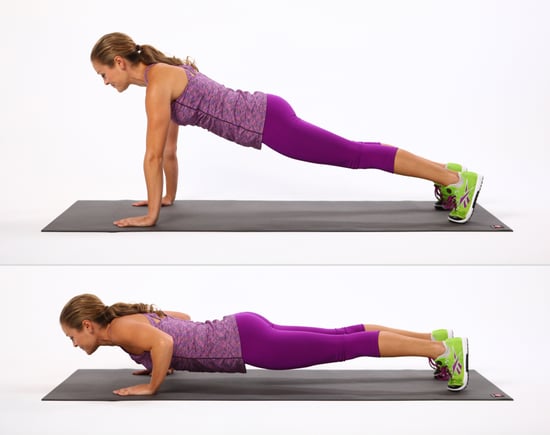What’s muscle endurance?
Muscular endurance refers to the ability of a given muscle to exert force, consistently and promotion, over a time period. It plays a big role in almost every athletic endeavor. You may think of muscular endurance as stamina.
Long-distance running is a sport that needs muscular endurance. During a race, a marathon runner’s body performs exactly the same motion and stride, over and over again. This needs their muscles to have an advanced degree of endurance to avoid harm or extreme fatigue.
However, you don’t need to train for a marathon to improve your muscle endurance. For the normal individual, it is often as simple as doing pushups before the collapse. This usually means doing one motion repetitively, with great shape, until you can’t perform it anymore.
And you do not need to be an athlete to benefit from increasing your muscular endurance. Just like other types of exercise, muscle endurance training may raise your energy levels, help you sleep better, and improve your general wellbeing. It may even enhance your mood.
Below are examples of five top exercises that may help you improve your muscle endurance. They need no gear and you can do them in your home.
1. Plank

- To begin, lie flat on your belly (buttocks touching the ground) with your legs level and upper torso propped up by your forearms.
- Lower your back and shoulder muscles, raise your buttocks off the ground.
- Hold as long as you can (target for periods of 30 to 45 minutes ) and then relax. That completes one repetition (rep).
Tips:
- Perform 5 repetitions of your longest hold possible.
- In the conclusion of the 5th rep, your arms must be quivering. This is a good sign that you’re pushing your own limits.
2. Bodyweight squats

- Start by standing upright with your feet placed in a position slightly wider than shoulder-width apart, and your toes pointed straight forward.
- Bend your legs and shed your buttocks down to the elevation of your knees. Your legs should form a 90-degree angle when you are at the base of the movement.
- With your weight on your heels, push yourself back vertical, squeezing through your glutes (buttock muscles) on the way upward.
- Play 5 sets of 25 repetitions. Fix this rep amount if you believe you are able to do more in the end of each set.
Tips:
- Maintain good form by keeping your chest out and shoulders back. Do not let your torso turn into parallel with the floor.
- Attempt a variation with this conventional squat by extending your stance and pointing your feet outward. This move will aim at the inside of the thighs.
3. Walking laps

- Stand upright with your feet shoulder-width apart.
- With your right leg, have a massive step ahead, then drop down your body so that your spine touches the ground.
- Push through your front heel and stand back vertical.
- Repeat the same motion with your left leg.
- Perform 5 sets of 30 lunges (15 on each leg, per set).
Tip:
Fight the urge to shed your torso. Maintain your abdomen upright.
4. Pushups

- Start by lying flat on your belly.
- Push yourself off the floor into a plank position. Hold your body up with your toes and with your palms (not your forearms, as with the plank described above).
- Lower yourself back down, letting your torso touch the floor.
- Promptly push down on your palms and increase your body back into a plank position.
- Perform 5 sets of 15 repetitions (adjust as needed).
Tip:
When this movement is too advanced for you, start with your weight on your knees instead of your toes.
5. Situps

- Start by lying flat on your back, with your legs bent and your feet flat on the floor. Put your hands beneath your neck, with your elbows out to the sides.
- Clench your belly muscles and bring your torso up so that it’s flush with your thighs. Resist the need to use momentum, rather than your muscles, to bring your body up.
- Guide your body down in a controlled motion to maximize your muscle usage.
- Perform 5 sets of 25 repetitions.
Tips:
When doing situps, use a yoga mat to maintain your tailbone from rubbing uncomfortably on the floor.
Improving your muscular endurance
You’ll likely receive the most noticeable consequences from these or other exercises if you obey a daily, exercise-until-failure approach to exercising. But don’t work for the exact same muscle group two days in a row. Make sure your alternate days. Rest is as important as exercise for muscle development.
Set aside 20 to 30 minutes per day at which you are able to work out. Keep in mind that a long workout (60 minutes or more) is not crucial to get better outcomes. It’s about the intensity at which you train.
Additionally, it is important to note that you can improve your muscular endurance and general fitness level by creating easy habits that you can do daily to challenge your self. These can include:
- Skipping the elevator. Take the stairs. If you have two healthy and capable legs, then use them!
- Walking to work if at all possible. If this is not possible, challenge yourself to walk for lunch rather than driving. Those extra steps will add up over time. This habit is particularly important if your line of work demands one to sit down behind a desk.
- Investing in a standing desk. Reputation burns off more calories than sitting, improves your posture, and generally promotes a more active work environment.
Talk with Your doctor
It is always a good idea to speak to your physician before beginning any exercise program, especially in the event that you have not exercised in a while. They may provide you guidance on other exercises that might work nicely for you, in addition, to make suggestions for techniques to reduce injury while exercising.

